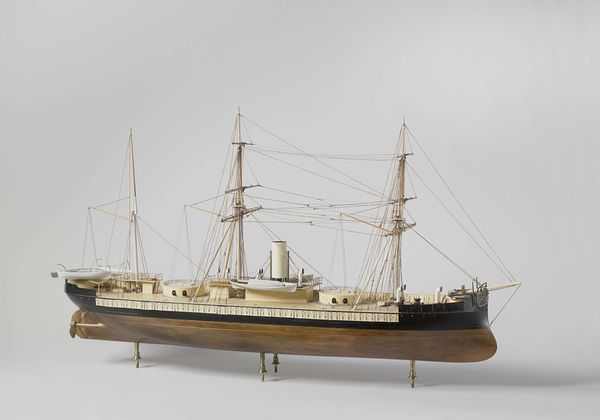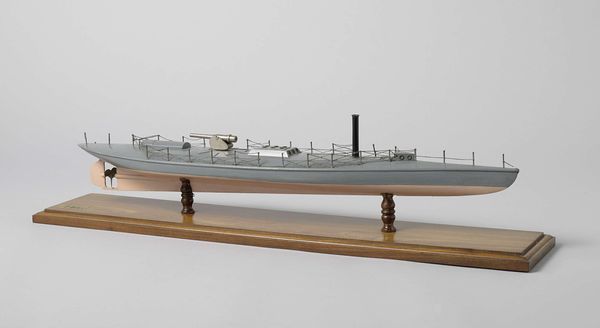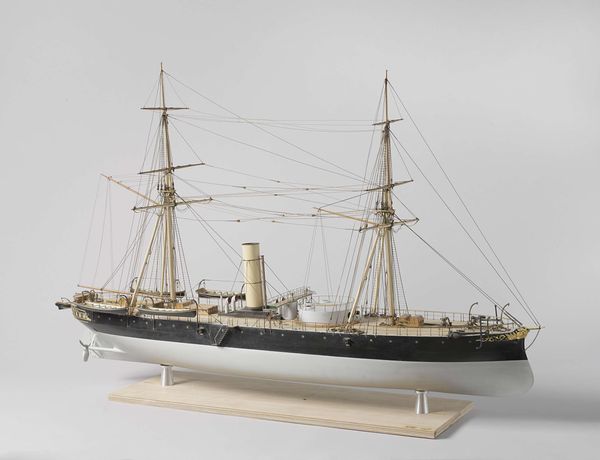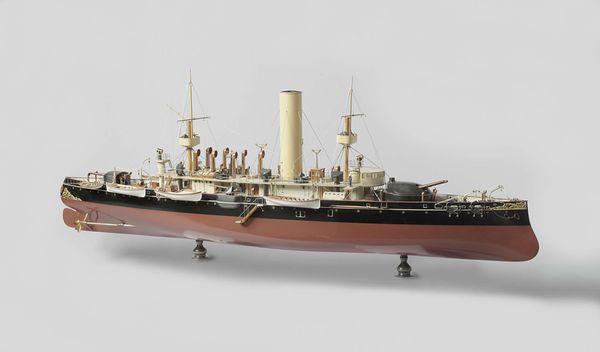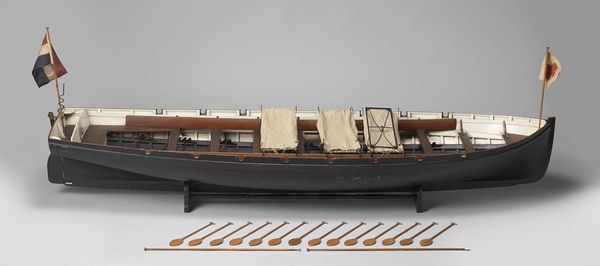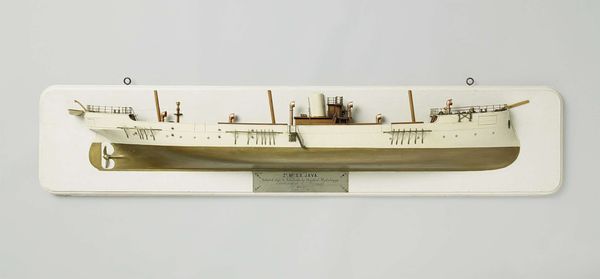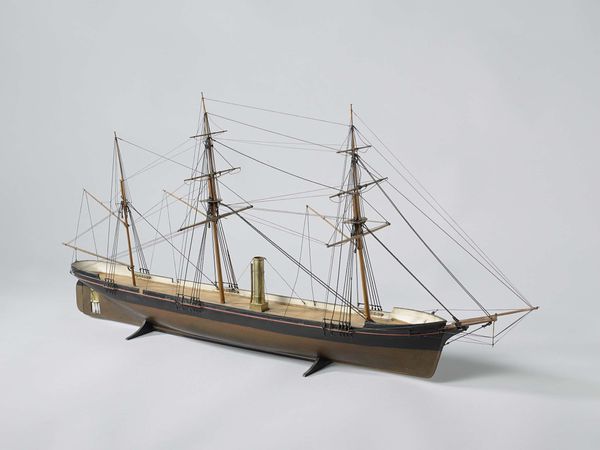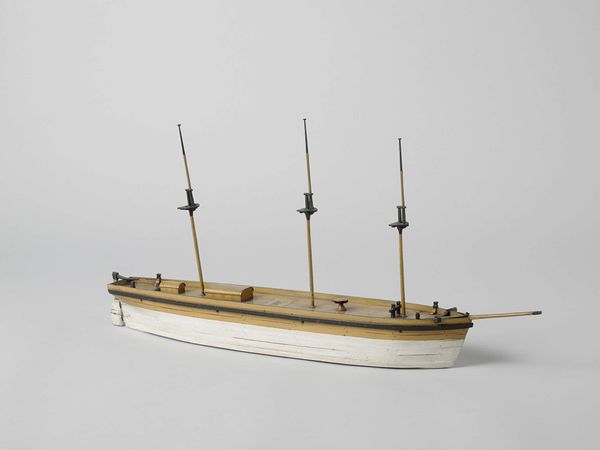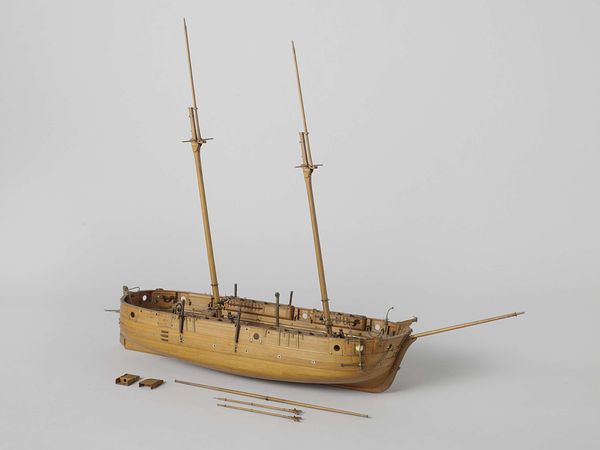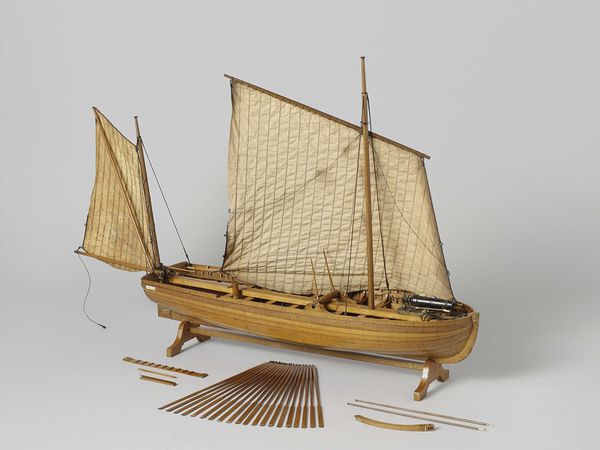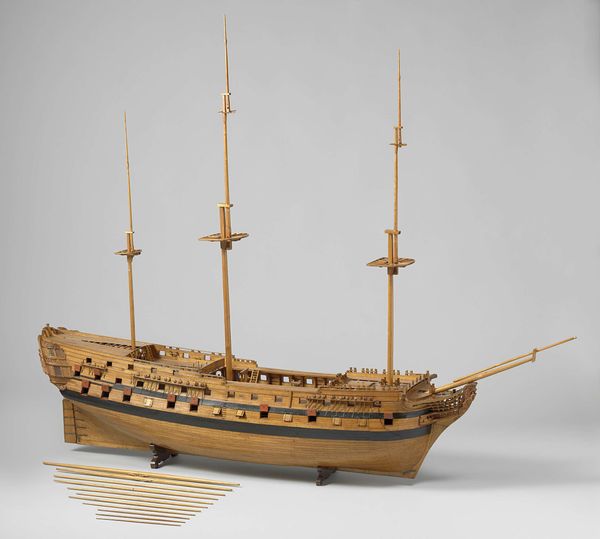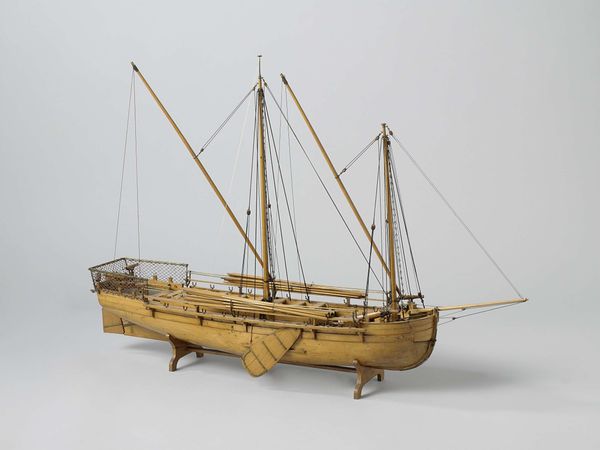
mixed-media, metal, sculpture, wood
#
mixed-media
#
architectural modelling rendering
#
metal
#
architectural product design
#
plastic material rendering
#
architecture mock-up
#
3d shape
#
prop product design
#
sculpture
#
architect
#
architecture model
#
wood
#
architectural proposal
#
mechanical engineering model
Dimensions: height 55 cm, length 134 cm, width 34.5 cm
Copyright: Rijks Museum: Open Domain
Editor: This is a mixed-media sculpture from 1868 by Laird Brothers, titled "Model of an Ironclad Ram Ship." Looking at the sleek, almost sterile form, I feel a tension between the beauty of its design and the violence it represents. How should we interpret such a powerful symbol of colonial ambition, especially from a contemporary perspective? Curator: It's crucial to consider this model within the context of 19th-century imperialism and technological advancement. These ironclad warships were tools of power projection, enabling European nations to dominate overseas territories. This isn’t just a model; it's a representation of industrial militarization and its devastating effects on colonized peoples. How do you think the materials used – metal, wood, possibly plastic – contribute to this narrative? Editor: I see what you mean. The materials reflect the shift towards industrialized warfare and mass production. It’s almost as if the ship’s brutality is sanitised through its pristine, almost clinical appearance. The contrast is unnerving. Does this "clean" aesthetic normalise and erase the human cost associated with these advancements? Curator: Precisely. The aesthetic appeal distracts from the underlying violence, obscuring the stories and trauma of those impacted by colonial expansion. This relates directly to contemporary discussions surrounding the ethics of technology and its role in perpetuating systemic inequalities. How can we engage with works like this in a way that confronts, rather than ignores, these problematic histories? Editor: Maybe by contextualising its creation. Discussing the artist's social standing and their place within the colonial machine and whose interests this warship model served. The clean aesthetic almost acts as a form of propaganda that needs to be debunked. Curator: Absolutely. By acknowledging the sculpture's complex role in historical power structures, we can begin a more critical and intersectional dialogue around art, technology, and social justice. It allows us to critically evaluate not just the object, but the ideologies it embodies. Editor: That’s really changed how I view it. Thank you. Curator: My pleasure. These uncomfortable dialogues are how we learn and grow.
Comments
No comments
Be the first to comment and join the conversation on the ultimate creative platform.

